Consumption patterns and biodiversity
Jianguo Liu
Center for Systems Integration and Sustainability
Department of Fisheries and Wildlife
Michigan State University
liuji@msu.edu
Introduction
Global biodiversity loss has been continuing despite numerous international efforts1. To make transformative change, it is essential to examine the root causes behind biodiversity loss such as consumption.
Consumer spending decisions profoundly affect global biodiversity in many complex ways. Their impact is amplified by growth in human population, even faster increases in the number of households2, and growth in per capita spending and total spending. However, the impacts are often masked by increasing telecoupling processes, meaning distant human-nature interactions such as trade3.
Traditionally, consumption needs were met locally so biodiversity conservation measures have largely focused on specific places separately. However, in recent decades, not only has consumption risen drastically, but the production of goods and services has also been steadily separated geographically from consumption. To understand consumption patterns and associated conservation challenges, a new integrated framework of ‘telecoupling’ has been developed4. Applications of the framework indicate that some of the measures to protect biodiversity in specific places have caused biodiversity loss elsewhere5. Furthermore, recent research suggests that some conventional wisdom about biodiversity impacts is incorrect6. For example, recent studies have unveiled surprising negative environmental impacts of telecoupling on places of consumption (contrary to the conventional wisdom that importing countries gain environmental benefits).
Telecoupling creates new and bigger challenges to biodiversity conservation. It is essential to reimagine biodiversity conservation with innovative solutions for governing telecoupled systems transparently and effectively. These include tracing product flows and unmasking their impacts on biodiversity along supply chains and beyond, enhancing awareness of telecoupled impacts, incorporating the cost of biodiversity loss into product prices, and coordinating efforts across locations worldwide.
New consumption patterns
Consumption increases with spending capacity and human population. From 1970-2018, global total spending jumped 25 fold (Figure 1), while the global population size nearly doubled and average global per capita spending increased 13 fold (from $600 in 1970 to $7,810 in 2018)7. Furthermore, global household numbers increased much faster than global population, especially in countries with biodiversity hotspots, for reasons such as rising divorce rates and more single living8. As households are basic units of consumption, household proliferation amplifies resource consumption.
Figure 1: Dynamics of global spending. (Data source: The World Bank 2020)
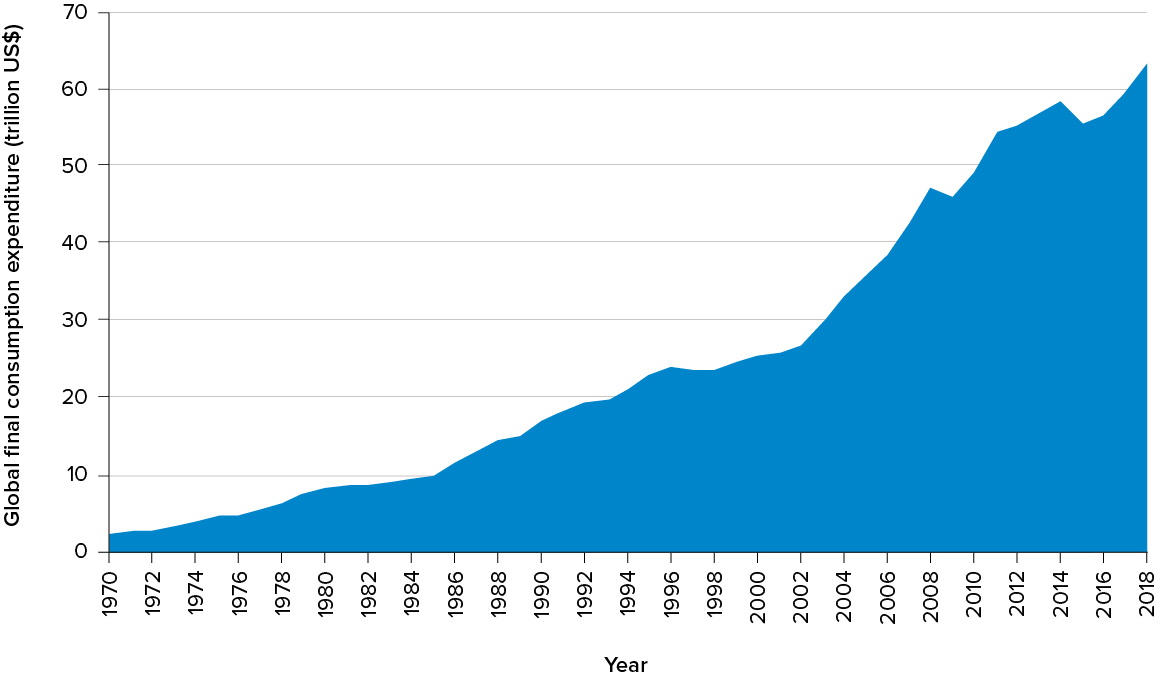
The patterns of human consumption have also changed drastically over time. For instance, the average amount of calories increased 31% from 2,196 to 2,884 kcal/capita/day from 1961-2013 (Figure 2a). The composition of food has become progressively more meat-based, with global meat consumption doubling from 23kg to 43 kg/capita/year during 1961-2013 (Figure 2b). There was a 5.9 fold increase in global freshwater use between 1901 and 2014 (Figure 2c). Global energy consumption increased 28 fold between 1800 and 2019, from a very low level throughout the 19th century and exponential increase since the beginning of the 20th century (Figure 2d). Many products have been changing very fast with rising higher rates of turnover in consumption, including fashion, computers, and communication devices such as smartphones. The longevity of many “durable” goods such as electronic appliances and buildings as well as automobiles has become shorter over time.
Figure 2a: Global resource consumption dynamics - Average calories per capita per day (Data source: Our World in Data 2020)
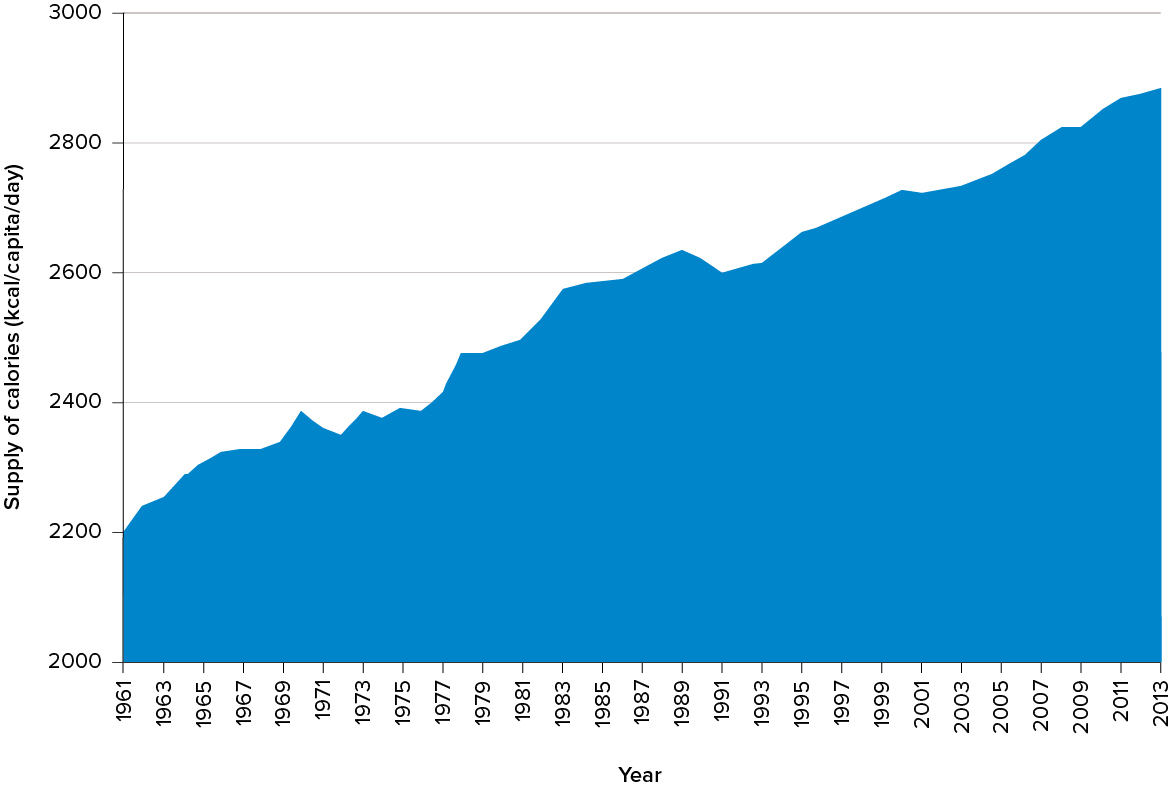
Figure 2b: Global resource consumption dynamics - Average meat consumption per capita per year (Data source: Our World in Data 2020)
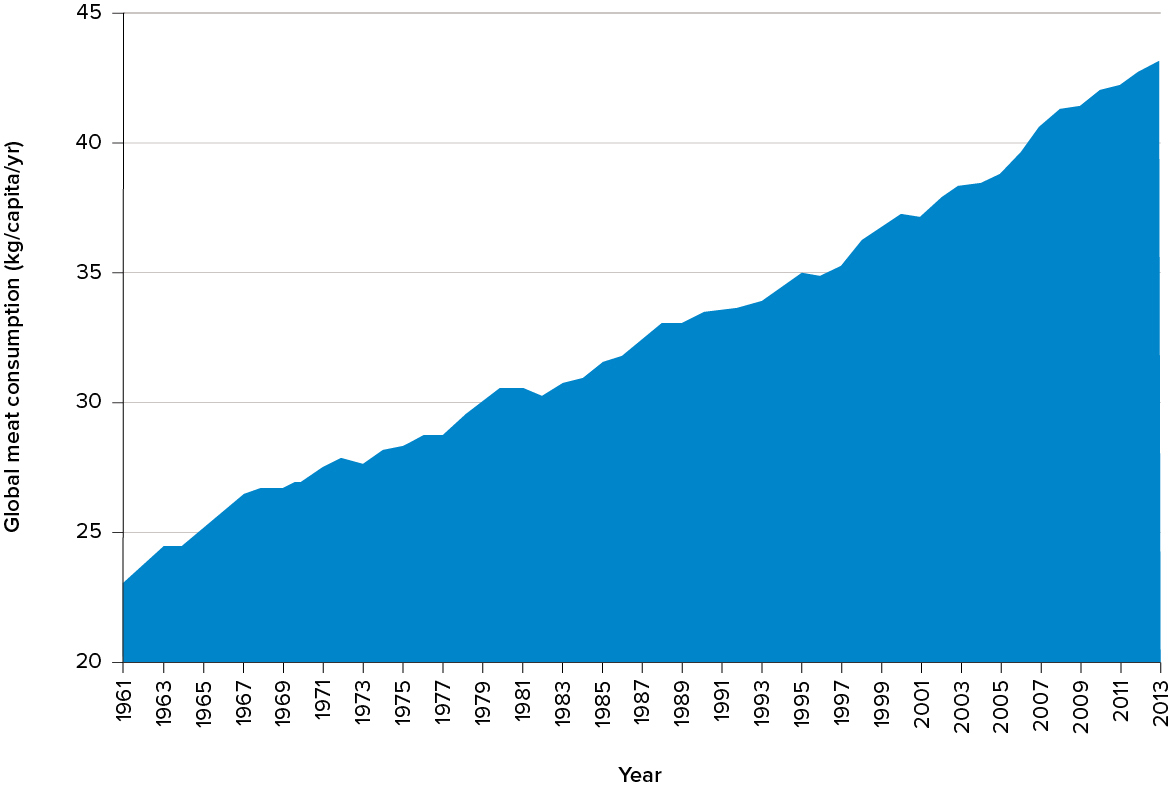
Figure 2c: Global resource consumption dynamics - Total freshwater use (Data source: Our World in Data 2020)
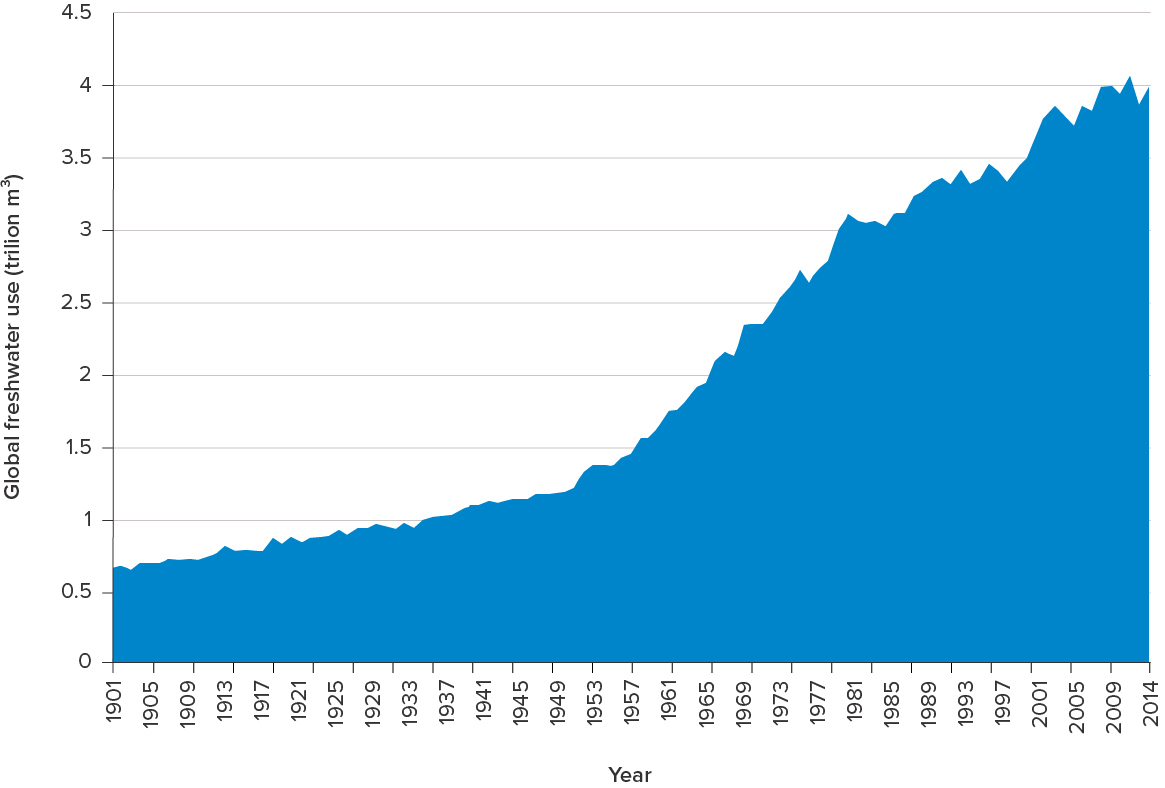
Figure 2d: Global resource consumption dynamics - Total energy use (Data source: Our World in Data 2020)
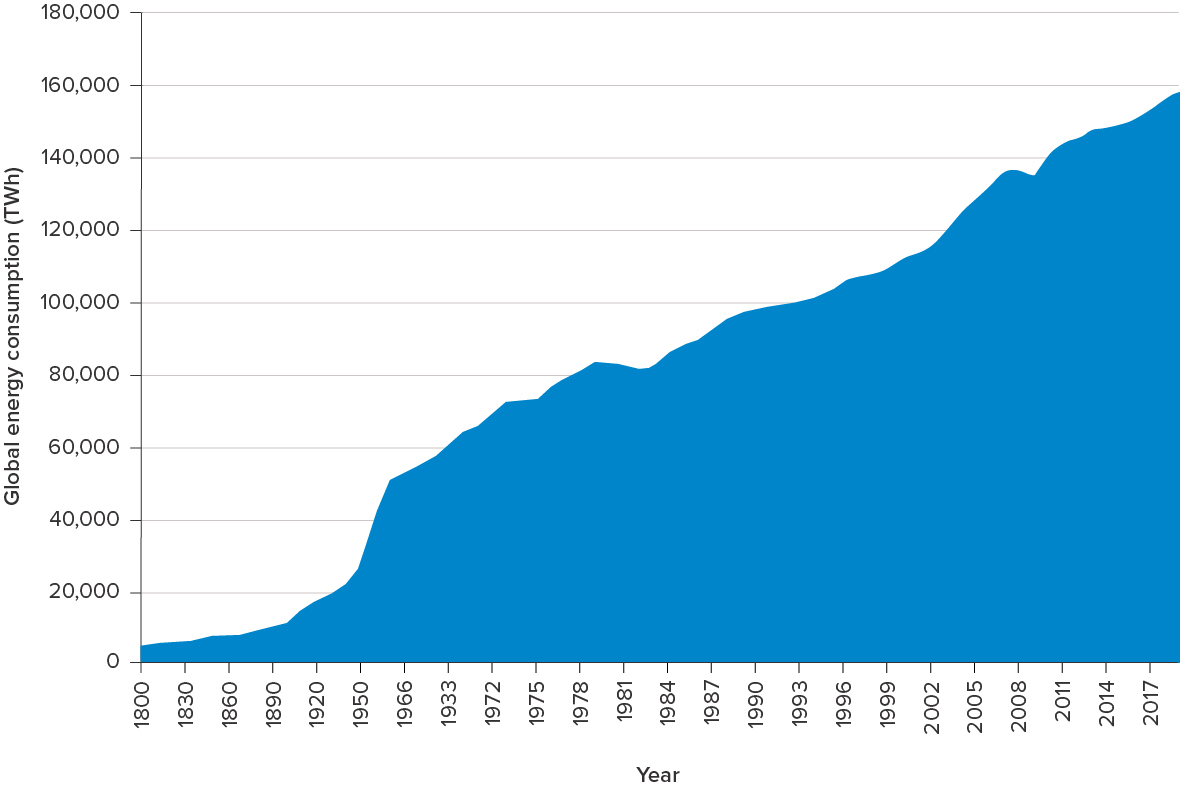
Another major change is that ever more products for consumption have been imported from distant places. Although such interconnections have existed for a long time, they have increased tremendously since around 1970. For instance, trade in agricultural commodities is increasingly linking consumers and producers worldwide. Many needs that historically were met locally are being met through the global trade. Food exports across country borders leaped 45 fold from 1961-2018 (Fig. 3). With rapid urbanization around the world, especially in Asia, there are more urban residents depending on resources from far away. One recent study9 demonstrated that only 11–28% of the global population can meet their demand for specific crops from within a 100-km radius. Local food supply could expand if yields rise and food loss is reduced, especially in Africa and Asia, but global supply chains are still needed for a stable and adequate food supply10.
Figure 3: Global exports of agricultural products. (Data Source: United Nations Statistics Division 2020)
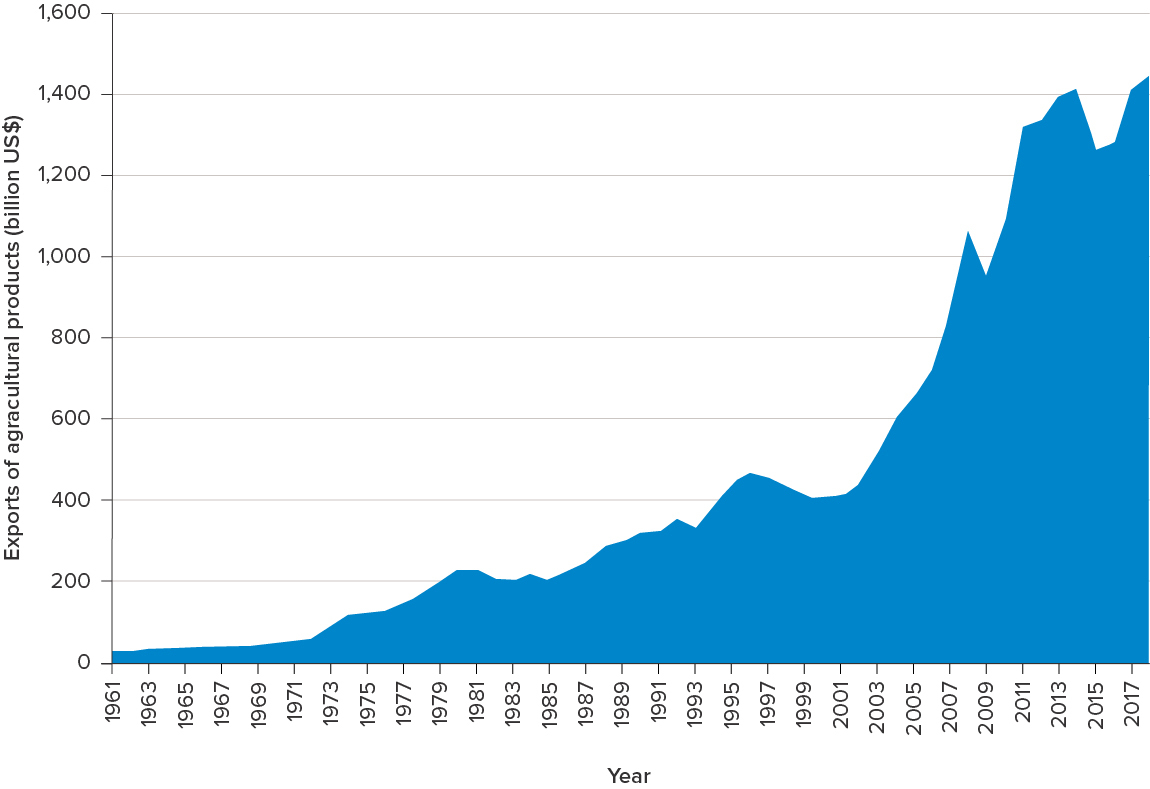
Besides trading virtual water (embodied water or water used for producing products), transfers of physical water across basins are important to meet needs in water-shortage areas. Over 40 countries have constructed more than 350 major inter-basin water transfer projects that divert ~540 billion m3 of water/year, or 14% of total global annual water withdrawals11. For instance, China’s South–North Water Transfer Project, the longest and largest water project in the world, is expected to transfer 44.8 billion m3 of water/year along three routes (a total of 3,090 km) from South China to North China12.
There are many other types of consumption whose production is geographically separated from people’s residence. For instance, numerous people not only consume imported products from distant places, but also travel to consume goods and services in distant places. Globally, terrestrial protected areas received ~ 8 billion visits/year during 1998-200713. The numbers of international tourists increased from 522 million in 2000 to 828 million people in 201314.
Impacts of consumption patterns on biodiversity
Changing consumption patterns have enormous implications for biodiversity. For example, a more meat-based diet requires more resources (land, water, energy) than a plant-based diet, thus affecting more habitat area and emitting more CO2. Shorter lives and faster replacement of consumer products also require more resources to manufacture and generate more pollutants and waste.
To understand all the impacts of the geographic separation between production and consumption, the integrated framework of telecoupling is useful15. Telecoupling is an umbrella concept, which includes all kinds of distant human-nature interactions such as trade, tourism, migration, foreign investment, water transfer, technology transfer, flows of ecosystem services, and information dissemination16. The telecoupling framework specifies three types of coupled human and natural systems17 that are connected through various flows (movement of information, material, energy, people, capital, organisms): sending systems (where the flows originate, such as exporting countries); receiving systems (where the flows end, such as importing countries); and spillover systems (places affected by the interactions between sending and receiving systems, such as the routes through which goods are transported) (Figure 4). In each system, there are agents (or actors that facilitate the flows), causes (reasons behind the flows, such as consumption demand and capacity for production), and effects (consequences or impacts from the flows, such as impacts on biodiversity). Agents and causes in different systems may act together to make the flows possible, and effects may vary in different systems. The telecoupling framework expands other frameworks on distant interactions such as the prevailing conceptual framing that focuses on producers in the Global South and consumers in the Global North (industrialized countries)18. It recognizes that many global south countries such as China are also big consumers and receiving systems of items like food, while some industrial countries such as the United States constitute the biggest net sending systems of food19. Furthermore, spillover systems are a distinctive feature of the telecoupling framework.
Figure 4: Illustrative diagram of telecoupled sending, receiving, and spillover systems. Each system is a coupled human and natural system.
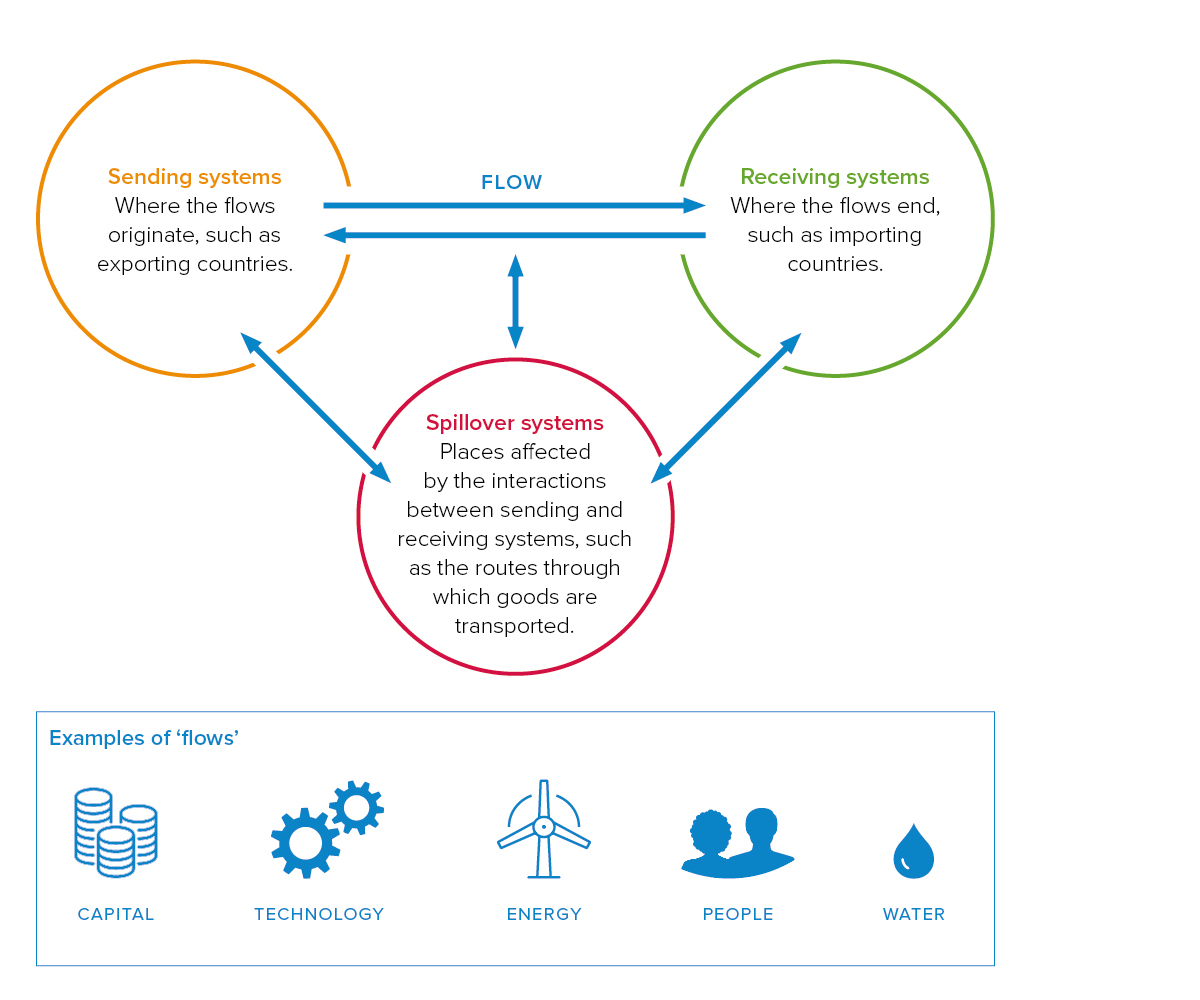
A number of studies have found threats and impacts of international trade on biodiversity in sending systems, especially in developing tropical countries with rich biodiversity that produce commodities to meet the demands of consumers in developed countries. For example, one study20 reported that 30% of global species threats are due to international trade. The consumption of imported goods such as coffee, tea, sugar, textiles, and fish in many developed countries threatens more species than does production for domestic consumption. One account21 argued that trade threats could be more serious when including more regionally threatened species. To illuminate which species threat hotspots are driven by which consumers, a global map was generated linking consumption to hotspots of threatened species caused by production22. For example, the results indicate that the United States and European Union exert many threats (mainly through fishing, pollution and aquaculture) to the global hotspot area of marine species in southeast Asia. Going from threats to actual impacts, one study23 found that 17% of total species loss in sending countries resulted from agricultural land use for export production while the remaining loss was due to production for domestic consumption. China and industrialized countries with high per capita GDP generally have more impacts on developing tropical countries. Another analysis24 reported that land use for export production accounted for a quarter of projected global species extinctions.
Compared to studies on biodiversity impacts in sending systems, there have been many fewer studies on receiving systems. Contrary to the widespread belief that importing countries (receiving systems) gain environmental benefits from trade, a recent study showed that food trade led to environmental pollution in receiving systems, e.g., increased nitrogen pollution after farmland for nitrogen-fixing soybeans was converted to grow other crops (e.g., corn, rice)25. The land use change affects not only nitrogen balance but also landscape structure, and thus habitats for biodiversity.
There are various impacts on spillover systems. Many studies have analyzed the CO2 emissions of trade26, with the effects on global climate indirectly affecting biodiversity. A recent example showed substantial spillover effects of supply-chain agreements (the Soy Moratorium and zero-deforestation beef agreement) to protect the Amazon forest from converting native land for food production for export. More specifically, there was a 6.6 fold increase of deforestation in the Tocantins State of the Cerrado in Brazil for production of soybeans and other agricultural products for export, although deforestation was halved in the Pará State in the Amazon27. This is because the agreements protect the Amazon forest but push the soybean production to the Cerrado region, a global savannah biodiversity hotspot.
Other types of telecoupling also have a wide range of impacts on biodiversity directly or indirectly. Globally, tourists annually consume ~138 km3 of fresh water, 39.4 Mt of food, 16,700 PJ of energy, and emit 4.5 Gt of CO228. Tourism can influence biodiversity both negatively (e.g., disturbing wildlife and plants) and positively (e.g., contributing conservation funds), but the net impacts may vary in different contexts29.
Telecoupling generates cascading effects, ranging from land use change (e.g., land conversion from natural ecosystems to cropland and grazing land for production to meet demands from distant consumers), agricultural intensification (e.g., use of more agrochemicals and more water due to changes to more resource-intensive crops), pollution (e.g., mining for exports and livestock rearing as a result of imports of animal feed), harvesting (e.g., fisheries, wildlife, timber, non-timber products), and greenhouse gas emissions. While each of these changes in specific locations has been known for some time, the recognition that telecoupling amplifies and connects them not only in sending systems, but also in receiving and spillover systems, is new30 and 31. Furthermore, long distances between sending and receiving systems mean not just more energy consumption for transport, but also differences in ecological, climatic, political, and cultural conditions, which generate variations in production and consumption as well as impacts on biodiversity.
Telecouplings also interact with each other and generate new telecoupling processes that further affect biodiversity. For instance, wildlife trade not only affects biodiversity, but also spreads diseases32. Water flows and redistribution through water transfer projects spread invasive species from sending to receiving systems and spillover systems, and alter habitats for aquatic organisms across telecoupled systems33. Introduction of species to new regions has been increasing rapidly due to transport, shipping across oceans and along rivers, trade, migration, tourism, and travel34.
Reimaging biodiversity conservation
Transforming biodiversity loss to gain requires reimaging biodiversity conservation and will need a range of solutions, such as balancing meat- and plant-based diets; prolonging the life span of buildings, roads, and electronic appliances; eliminating waste; slowing down “fast” fashion in clothing; recycling and reusing products; and taking steps to slow household proliferation such as by reducing divorce and promoting shared living. However, these are not sufficient to fundamentally alter the continuing trajectory of declining biodiversity in the telecoupled world. Reimaging biodiversity conservation is essential because telecoupling often goes beyond political and administrative boundaries. Here are several suggestions.
Trace flows and impacts throughout telecoupled systems. Traceability of flows along supply chains and beyond (in spillover systems) is critical to identify leverage points for reducing human impacts on biodiversity. A dynamic tracing system should include web-based and network-based databases that are transparent and (near) real time. Impact assessment can be aided by satellite images, sensors, drone, machine learning, and other AI tools. The Internet of Things (IoT) platform35 can trace products to their origins across telecoupled systems (e.g., production location, raw materials, products, impacts on biodiversity). This can provide consumers with the information about specific product properties to make informed purchasing decisions (such as avoiding products that harm biodiversity) because it offers consumers visibility, transparency, and guarantees about the items they purchase. Integrating IoT with blockchain technology and smart contracts may be useful in developing automated, transparent, and decentralized tracing systems36 as the source of the products can be traced, and responsible entities can be tracked throughout the supply chain37. Some agencies such as the European Union have already required food producers to trace all raw materials throughout the supply chain38, using the farm-to-fork (F2F) model39.
Enhance awareness of telecoupled impacts. New efforts are needed to remove any misapprehension that the consumption of distant products has no impacts on biodiversity. It is natural that people are unaware of the impacts of production in distant places. In reality, there are complex cascading impacts on biodiversity which in turn affect the economy, including gross integrated product (total economic value of all final goods and services produced by humans and nature within a place during a given period of time) and net integrated product (gross integrated product minus total economic loss). These aggregate economic measures go beyond GDP by incorporating economic gains from biodiversity and other products as well as economic losses from environmental pollution, ecological destruction, and other factors locally and faraway. They make nature integral to the economy, rather than leaving it outside the production boundary as GDP does. They can be accounted for using systems convergence – integration of multiple sectors, scales, and places through close collaborations among researchers of multiple disciplines and stakeholders. Spatial sustainability science is warranted to address spatial dynamics and mechanisms of sustainability of Earth’s human and natural systems including biodiversity. To boost people’s awareness of the impacts and encourage good consumption decisions, high-profile news media outlets and leaders can play important roles40 and 41. Insights from behavioural psychology may help connect consumers to distant places and make telecoupled impacts more visible.
Provide telecoupling “carrots” and “sticks”. Awareness alone is often not enough to bring about the needed behavioural changes. Thus, both “carrots” and “sticks” can help reduce and even eliminate consumption impacts on biodiversity. Relevant measures include incorporating negative impacts on biodiversity into product prices, compensating and rewarding those who conserve biodiversity, and requiring those who damage biodiversity to pay the costs of biodiversity loss and restoration. For example, after realizing the connections between soybean production and deforestation in Brazil, consumers and activists in developed countries pressed the soybean industry to cease planting on clear-cut land. The resultant soybean moratorium has helped substantially reduce the rate of deforestation in the Amazon, but now new measures are needed to eliminate the spillover effects that increased deforestation in the Cerrado42.
Avoid the “fragmentation paradox”. While reducing and eliminating biodiversity loss is essential, restoring biodiversity is also important and the United Nations is launching the UN Decade of Ecosystem Restoration initiative43. However, some restoration efforts have increased habitat fragmentation even though the amount of habitat has increased44. I call this phenomenon the “fragmentation paradox” because the prevailing fragmentation theory suggests that increases in habitat quantity lead to a reduction in fragmentation. To avoid the fragmentation paradox, it is essential to restore and create new habitat adjacent to rather than distant from the existing habitat.
Coordinate efforts across telecoupled systems. Although many scholars have called for taking human impacts across supply chains into account, it is essential to go beyond supply chains by considering the impacts on not only supply chains (sending and receiving systems), but also spillover systems. For instance, it is necessary to rethink and re-evaluate the local food movement because consuming local products may not be necessarily best for global biodiversity. Although consuming local food saves energy and reduces CO2 emissions for transport, the reduction in the amount of energy consumed and CO2 emitted may be offset by higher use of energy for local production and associated emissions, as well as direct impacts on local biodiversity. Producing food in a local biodiversity hotspot may be more harmful than importing food from another place with low biodiversity. A better approach is to produce products in areas with low biodiversity and minimize energy use during transportation of the products to consumers. In addition, sharing resources and transferring knowledge and techniques to conserve and restore biodiversity across different systems can promote conservation overall. Furthermore, proactive efforts, timely monitoring and feedbacks for adaptive governance are crucial.
Concluding remarks
New consumption patterns have increased impacts on biodiversity worldwide and pose unprecedented and complex challenges. Solving these requires creating new perspectives and taking advantage of new opportunities. A critical entry point is to address consumption and biodiversity systematically as parts of global telecoupled systems. Concerted efforts are needed to inform and empower not only local producers, who directly affect biodiversity in the sending systems, but also distant consumers in the receiving systems, as well as others in spillover systems and those who facilitate production, transport, and consumption. These and other collective actions are essential to transform biodiversity loss into recovery in the telecoupled world.
Acknowledgments
I am grateful to Sandra Díaz and the Steering Group of the Royal Society Biodiversity Programme for inviting me to write this essay. This essay has benefited from constructive comments and helpful suggestions from Diane Coyle, Mike Edbury, Sarah Harper and Sue Nichols. Shuxin Li helped with some references and figures. Funding for this work was provided by the U.S. National Science Foundation, Michigan AgBioResearch, and Michigan State University for the Rachel Carson Chair in Sustainability position.
